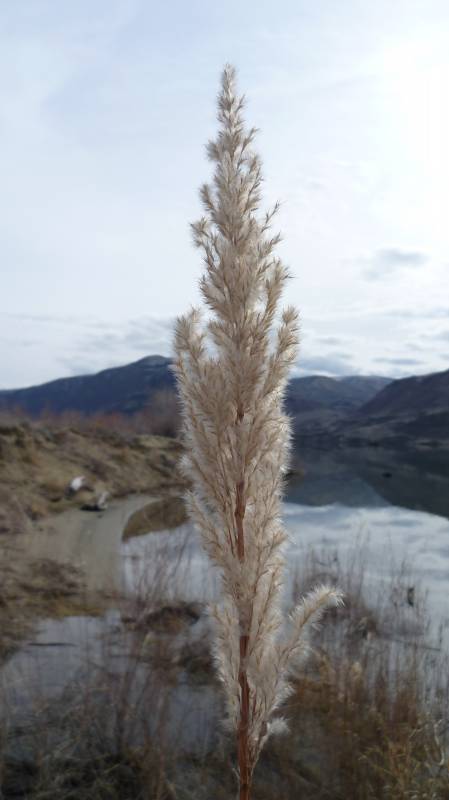Hosted by the University of Washington Herbarium, Burke Museum
Publication: Botanical Magazine 124: pl. 7607. 1898.
Origin: Introduced from northern South America
Herbarium search: CPNWH
Notes: Recently collected as an escape from cultivation in King & Snohomish Cos.
FNA25: "Cortaderia jubata is found on the west coast of the coterminus United States, growing in disturbed, open ground such as brushy slopes, eroded banks and cliffs, road cuts, cut-over timber areas, and sand dunes. It is native to mountainous areas of Bolivia, Peru, and Ecuador. It was grown in the past as an ornamental because of its attractive panicles, but is now a serious weed in California, reproducing apomictically and invading many open habitats. It was mistakenly called Cortaderia rudiuscula Stapf by Hitchcock (1951). The florets of C. rudiuscula differ from those of C. jubata in being longer and narrower, having shorter, less hairy calluses, and in having no hairs that extend beyond the top of the palea. Cortaderia rudiuscula is not known from North America."
Last updated 11/30/2023 by David Giblin.

